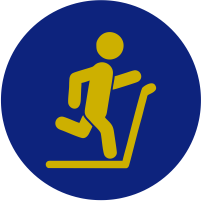Rotator Cuff Arthropathy
What Is Rotator Cuff Arthropathy?
What is the Rotator Cuff?
To understand what a Rotator Cuff Arthropathy is, first we need to give a little bit of background on what the Rotator Cuff is and what it does.
The rotator cuff is made up of 4 muscles that originate on the scapula. They are the:
- Supraspinatus
- Infraspinatus
- Teres Minor
- Subscapularis.
These 4 muscles have tendons which connect the muscle belly to the bone. The tendons of these muscles attach onto the humerus or upper arm bone. The area of the humerus in which they attach to is the “ball” of the gleno-humeral (ball and socket) joint. When the tendons are pulled on by the muscle, they perform different actions or motions of the arm. These motions are ones like:
- Raising the arm straight up in the air
- Reaching to the side
- Rotating the arm away from the body
- Reaching up behind the back to pass a belt or unhook a brae.
These tendons attach very closely together on the ball of the shoulder and essentially form one continues tissue formation across the top the shoulder joint. One can think of it as the cuff of a dress shirt covering the top of the wrist. The rotator cuff acts as a dynamic stabilizer holding the ball of the shoulder in line with the socket of the shoulder. When a big tear of the cuff occurs, this stability is lost, and the normal mechanics of the shoulder are thrown off. Over time and left untreated, this injury can result in a Rotator Cuff Arthropathy (RCA)
What is a Rotator Cuff Arthropathy?
A RCA is a degenerative process that happens over extended periods to time. It most commonly occurs in patients who, at some point, suffered a rotator cuff tear and it was left untreated. This tear could be small, medium, large or massive in nature. Over time, a smaller tear may worsen and get bigger if left untreated. For a large to massive rotator cuff tear, which normally occurs traumatically from a fall or heavy lifting, they are already as bad as they can get in most instances. When these tears become big, the rotator cuff loses one of its primary functions, dynamic stability of the ball and socket joint.
When dynamic stability of the joint is lost from a massive tear, the ball of the shoulder joint rides high. Think of it as the joint being out of alignment just like your tires on a car. When your tires are out of alignment, they tend to wear out on places they shouldn’t. Same concept with your shoulder joint. When the ball isn’t sitting in correct alignment with the socket, it wears out and rubs on different structures in the joint. This leads to arthritis of the shoulder. When a patient develops arthritis on top of their preexisting rotator cuff tear, this is what we call a Rotator Cuff Arthropathy.
What are Signs and Symptoms of a RCA?
Typically patients will complain of popping, grinding, catching locking of the shoulder. They will also complain of the inability to raise there arm above chest level with ease in most cases
We most commonly find on physical exam a difference in a appearance of the two shoulders just by looking at the skin. Patients have intense difficulty (most of the time) raising the arm above chest level on their own. If we move the shoulder past this level, the joint grinds and rubs and causes pain. Patients also have significant strength differences between the two shoulders.
How do we Diagnose a RCA?
X-rays…To diagnose a RCA is fairly simple. A plain X-ray is all that is normally needed. This will show us most of the time that the ball of the shoulder is riding high in the joint and rubbing in places it shouldn’t. It will also show us that there is or is not significant arthritis present indicating a RCA. There isn’t much need of an MRI to rule in or rule out a RCA as the biggest factor is the presence of arthritis and a plain x-ray can do that for us. Sometimes surgeons will ask to get a CT scan of the shoulder which is basically a 3-D x-ray. This will help for surgical planning and for checking the amount of bone loss that may be present from the years of having a RCA.
How do we treat a RCA?
Please follow this link to our Reverse Total Shoulder Arthroplasty page to learn more about treatment options for a RCA!



